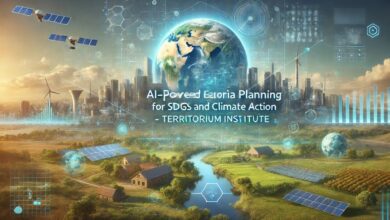Hurricanes and Climate Action Topical Authority for Local Governments-SDGIEVER

- Pillar Content: Local Governments Leading Climate Action at COP 29
- Cluster 1: Why COP 29 Matters to Cities and Municipalities
- Cluster 2: Hurricanes Helene and Milton – Lessons for Local Governments
- Cluster 3: Climate Resilience and Adaptation for Local Governments (SDG 13)
- Cluster 4: Reducing Emissions and Achieving Net Zero at the Local Level
- Cluster 5: Renewable Energy and Climate Solutions for Local Governments
- Cluster 6: Disaster Preparedness and Recovery at the Municipal Level
- Cluster 7: Public-Private Partnerships for Local Climate Action
- Cluster 8: Engaging Citizens in Local Climate Action
- Cluster 9: Local Policy and Climate Governance at COP 29
- Conclusion: Local Governments at the Forefront of Climate Action
let’s dive into the topical authority cluster structure focused on COP 29 and how local governments (cities, regions, and municipalities) can address climate action and prepare for climate-related disasters like Hurricanes Helene and Milton. This structure will provide insights on how local authorities can play a pivotal role in addressing SDG 13 (Climate Action), building resilience, and actively participating in global climate negotiations like COP 29.
Pillar Content: Local Governments Leading Climate Action at COP 29
- This pillar will focus on why local governments are crucial in addressing climate change and how COP 29 presents a unique opportunity for them to influence global climate policy. It will serve as the foundation for all other clusters, explaining the role of cities and municipalities in shaping climate action.
Cluster 1: Why COP 29 Matters to Cities and Municipalities
- What Is COP 29 and Why It’s Critical for Local Governments
- How Local Governments Can Shape Global Climate Policy at COP 29
- The Role of Cities in Driving Climate Solutions Ahead of COP 29
- How COP 29 Negotiations Will Impact Local Climate Initiatives
- How Municipalities Can Engage with Global Leaders at COP 29
- Why COP 29 Is a Turning Point for Climate-Resilient Cities
- Local Voices at COP 29: How Cities Can Advocate for Climate Action
- Preparing for COP 29: How Local Governments Can Align Their Climate Goals
- How COP 29 Could Unlock Funding for Local Climate Projects
- The Global-Local Nexus: Why COP 29 Decisions Matter to Municipalities
Cluster 2: Hurricanes Helene and Milton – Lessons for Local Governments
- What Hurricanes Helene and Milton Teach Us About Climate Resilience
- Why Cities Must Prepare for Stronger Hurricanes in a Warming Climate
- How Local Governments Can Build Resilience to Climate Disasters
- Hurricanes, Floods, and Fires: How Cities Can Prepare for Climate Extremes
- Learning from Helene: How Coastal Cities Can Adapt to Rising Sea Levels
- Post-Disaster Recovery: What Local Governments Can Do After a Hurricane
- How to Implement Climate Disaster Risk Reduction at the Municipal Level
- How Local Governments Can Engage Communities in Climate Resilience
- Building Climate-Resilient Infrastructure: Lessons from Hurricanes
- How Hurricanes Like Helene and Milton Highlight the Need for Local Climate Action
Cluster 3: Climate Resilience and Adaptation for Local Governments (SDG 13)
- How Cities Can Adapt to Climate Change and Reduce Vulnerabilities
- The Importance of Local Climate Adaptation Plans for Cities
- Building Flood-Resilient Infrastructure in Coastal and Inland Cities
- How Local Governments Can Fund Climate Adaptation Projects
- Implementing Early Warning Systems for Climate Disasters at the Local Level
- How Cities Can Develop Long-Term Strategies for Climate Resilience
- Why Climate Adaptation Matters: Lessons from Recent Hurricanes
- Collaborating with Local Communities for Climate Resilience
- How Municipalities Can Secure Climate Financing for Resilience Projects
- Climate Adaptation in Urban Planning: Preparing Cities for the Future
Cluster 4: Reducing Emissions and Achieving Net Zero at the Local Level
- How Local Governments Can Lead the Transition to Net Zero
- Carbon Reduction Strategies for Cities: What Works
- How Municipalities Can Cut Emissions Through Public Transportation Initiatives
- Electrifying Local Infrastructure: How Cities Can Transition to Green Energy
- How to Reduce Carbon Emissions in Municipal Buildings and Facilities
- Promoting Electric Vehicles in Cities: Incentives and Infrastructure
- Achieving Net Zero at the Municipal Level: Roadmaps for Success
- How Cities Can Implement Energy Efficiency Programs for Residents
- How Municipalities Can Encourage Businesses to Adopt Low-Carbon Practices
- Monitoring and Reporting Emissions: How Local Governments Can Track Progress
Cluster 5: Renewable Energy and Climate Solutions for Local Governments
- How Local Governments Can Drive the Transition to Renewable Energy
- Investing in Solar Energy: How Cities Can Implement Solar Power Projects
- Wind Energy in Urban and Rural Communities: A Local Government Guide
- How Municipalities Can Lead the Green Energy Revolution
- Public-Private Partnerships for Renewable Energy at the Local Level
- How Local Governments Can Promote Community Solar Projects
- Renewable Energy Solutions for Low-Income Communities
- Integrating Renewable Energy into Municipal Infrastructure
- How Local Governments Can Fund Clean Energy Projects
- The Role of Local Governments in Accelerating Renewable Energy Adoption
Cluster 6: Disaster Preparedness and Recovery at the Municipal Level
- How Cities Can Prepare for Extreme Weather Events Like Hurricanes Helene and Milton
- How to Build a Resilient Disaster Response Plan for Local Governments
- Post-Disaster Recovery: How Cities Can Rebuild Faster and Smarter
- Community Engagement in Disaster Preparedness: Lessons from Helene
- How Cities Can Use Technology to Improve Disaster Preparedness
- Resilient Infrastructure: Building for the Future in Hurricane-Prone Areas
- How Local Governments Can Access Emergency Funds for Disaster Recovery
- The Role of Local Governments in Coordinating Disaster Relief Efforts
- Building Back Better After Climate Disasters: What Municipalities Need to Know
- How Cities Can Protect Vulnerable Populations During and After Disasters
Cluster 7: Public-Private Partnerships for Local Climate Action
- How Cities Can Form Public-Private Partnerships for Climate Action
- Leveraging Corporate Support for Local Climate Initiatives
- How Municipalities Can Work with Businesses to Reduce Carbon Emissions
- How Local Governments Can Collaborate with Tech Companies for Climate Solutions
- Funding Climate Resilience: Public-Private Partnerships for Infrastructure Projects
- Engaging the Private Sector in Local Climate Disaster Preparedness
- How Public-Private Partnerships Can Accelerate Renewable Energy Adoption
- Local Businesses and Climate Action: How to Foster Collaboration
- How Cities Can Partner with Financial Institutions to Fund Climate Projects
- Creating Long-Term Partnerships for Sustainable Local Development
Cluster 8: Engaging Citizens in Local Climate Action
- How Local Governments Can Mobilize Communities for Climate Action
- Engaging Citizens in Climate Resilience Planning
- Public Education on Climate Change: How Cities Can Raise Awareness
- Creating Local Climate Action Councils to Involve Residents
- How Municipalities Can Support Grassroots Climate Movements
- Citizen-Led Climate Initiatives: How Local Governments Can Provide Support
- The Role of Local Governments in Facilitating Climate Education
- Encouraging Sustainable Lifestyles in Local Communities
- How to Engage Citizens in Climate-Resilient Urban Planning
- Promoting Public Participation in Climate Policy Decision-Making
Cluster 9: Local Policy and Climate Governance at COP 29
- How Local Governments Can Influence Global Climate Policies at COP 29
- The Role of Local Governments in Shaping National Climate Targets
- How Cities Can Align Their Climate Policies with Global Goals at COP 29
- Why Local Climate Policies Matter in Global Negotiations
- How to Create a Unified Local Voice for COP 29
- How Municipalities Can Ensure Their Climate Priorities Are Represented at COP 29
- Aligning Local Climate Action with International Agreements
- The Role of Local Governments in Achieving Nationally Determined Contributions (NDCs)
- How COP 29 Will Impact Local Climate Governance
- Building Local Climate Coalitions to Amplify Impact at COP 29
Conclusion: Local Governments at the Forefront of Climate Action
This topical authority cluster structure empowers local governments to take the lead in addressing climate change ahead of COP 29. By focusing on resilience building, renewable energy adoption, disaster preparedness, and community engagement, local governments can significantly contribute to global climate goals while protecting their communities from the impacts of climate disasters like Hurricanes Helene and Milton.




